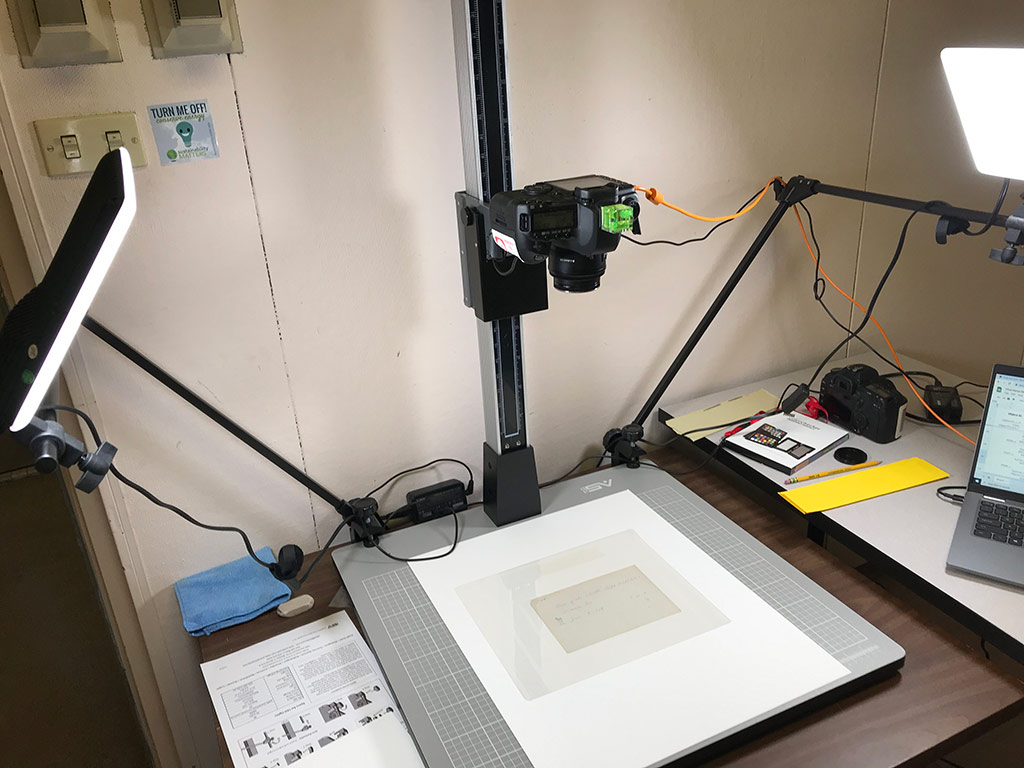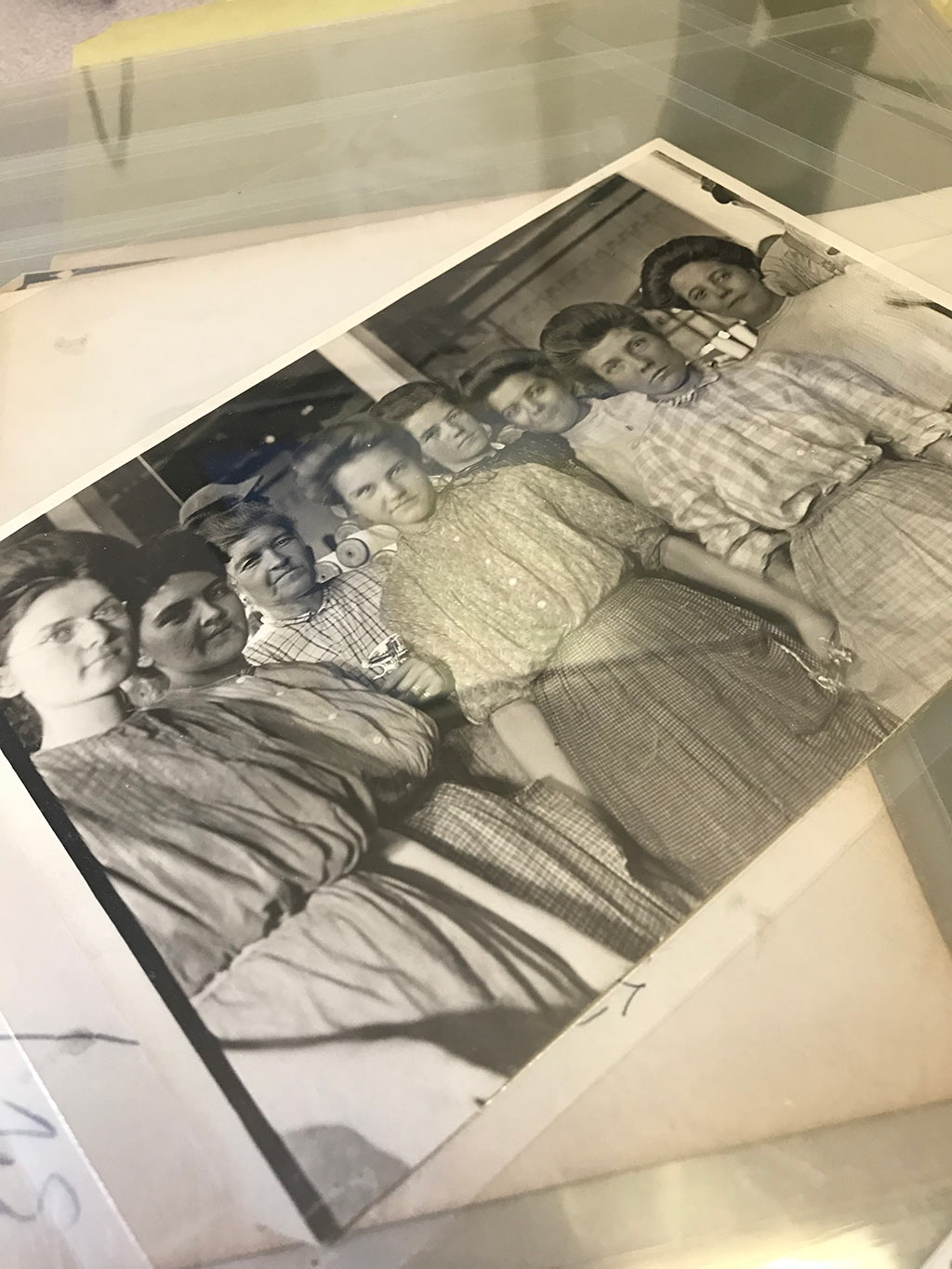Intern Meredith Power shares her experience working on the NEH Preservation Assistance Grant awarded to the Special Collections, "Rehousing the Lewis Hine Collection," which is a part of NEH's "A More Perfect Union": America at 250, exploring America's story and commemorating its 250th anniversary.
Thanks, Meredith!
Picturing Pictures: Digitizing the Lewis Hine Collection Prints'... Versos?
By Meredith Power, Special Collections Intern
Digitized materials offer access to research archives for any global audience with an internet connection. The importance of this access has been brought into sharp relief over the last few years of COVID restrictions.
While many people, then, understand the idea of an online database of, say, early 20th century photography documenting child laborers and their working conditions across the United States, the whole process of digitization is often less well-known. Why, for example, would Special Collections want to digitize the versos [the backs] of the five thousand or so prints it holds as part of the Lewis Hine Collection? And what does that digitization involve?
UMBC and the Library of Congress are the only two institutions with a complete (or nearly) set of the photographs that Hine produced for the National Child Labor Commission, an activist group lobbying for the end of child labor. The Library of Congress's prints, though, are mounted, meaning that the backs of the prints cannot be seen. In the case of Hine's work, this is frustrating, as many of the reverse sides (the versos) of his prints include notes about the image or about the process he used to produce the print. As compelling as his subjects themselves were, Hine's literally behind-the-scenes commentary is insightful, often heartbreaking, and occasionally funny. Unlike those in the collection at the Library of Congress, UMBC's prints are not mounted to anything, allowing users full access to the marks and writing on the back of each sheet.
Digitizing a photograph can be tricky work. In addition to the basic need to capture a clear, high-resolution image, the worker (me) must know how to handle fragile old objects like these photographs, printed on sometimes tissue-thin paper. Sometimes, the photographs have become stuck within their Mylar enclosures, and cannot be photographed (this project will also address that issue, to protect the photographs in new, better enclosures). Sometimes, the photographs have become stuck within their Mylar
enclosures, and cannot be photographed (this project will also address
that issue by protecting the photographs in new, better enclosures).
Sometimes, the photographs show their age clearly in the significant
glue residue on the reverse and their missing corners or torn and
tattered edges.
My copy stand photography work will complement the NEH Preservation Assistance Grant-funded project "Rehousing the Lewis Hine Collection." This project will replace the photographs' existing enclosures (which currently have adhesive migration from the double sided tape used to encapsulate them in Mylar) with new one polyester sleeves and rigid backing boards to provide support, plus new custom fit boxes. Before that portion of the project takes place, though, I am working quickly and carefully to complete as many photographs of versos - backs of prints - as possible each week. My photographs themselves are taken using a copy stand, a special tabletop platform equipped with high-power LED lights that eliminate shadows (see below). A digital camera is mounted with its lens pointing straight down above the platform, and using specialty software and connectors, a worker is able to photograph the back of each print. The information about the print is carefully recorded in a detailed spreadsheet, indicating not just the digital file's name but also any significant issues with the print's condition, the date the photograph was taken, and who took it.

A behind-the-scenes photo of the copy stand workspace, showing the digital camera pointed at the verso (the back) of one of the Hine collection prints.

A closer look at the hand-written note on the verso of P528. This print features Hine's description, handwritten in pencil - "Some of the adults Bibb Mill no. 1 Macon, Ga. Jan 9, 1909." - and his initials.

The front of P528. You can learn more about this print in the Lewis Hine Collection digital collection.
Digitizing these photos is tricky work, demanding close attention not just to the technical processes involved but also in the careful handling of these fragile historic items. The work is rewarding, though. In addition to preserving the information about these images in a stable, secure way, this project will significantly increase scholars' access to Hine's important work of documenting labor conditions in early twentieth-century America.